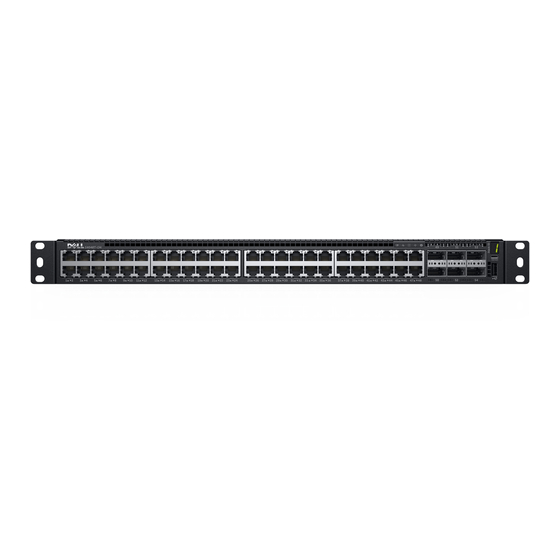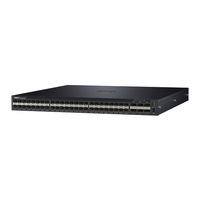
User Manuals: Dell S4048T-ON Network Switch
Manuals and User Guides for Dell S4048T-ON Network Switch. We have 2 Dell S4048T-ON Network Switch manuals available for free PDF download: Configuration Manual, Getting Started Manual
Dell S4048T-ON Configuration Manual (1146 pages)
Table of Contents
-
-
Audience36
-
Conventions36
-
-
-
4 Management
62-
-
802.1X88
-
-
-
-
IP Prefix Lists129
-
ACL Resequencing133
-
Route Maps135
-
-
How BFD Works144
-
BFD Sessions146
-
Configure BFD149
-
-
-
Route Reflectors179
-
BGP Attributes180
-
Weight182
-
Local Preference182
-
Origin184
-
AS Path185
-
Next Hop185
-
-
Enabling BGP192
-
-
Debugging BGP225
-
Capturing Pdus227
-
PDU Counters228
-
-
CAM Allocation235
-
Test CAM Usage237
-
View CAM Usage239
-
CAM Optimization239
-
-
-
-
-
Rtag7318
-
15 FIP Snooping
322 -
-
-
-
Ring Status348
-
-
-
-
Hitless Behavior367
-
Graceful Restart367
-
-
-
IGMP Version 2369
-
IGMP Version 3371
-
-
Configure IGMP374
-
Adjusting Timers376
-
IGMP Snooping380
-
-
22 Interfaces
392-
Interface Types393
-
VLAN Interfaces402
-
Null Interfaces403
-
-
Link Dampening420
-
Port-Pipes424
-
Dynamic Counters430
-
24 Ipv4 Routing
434-
IP Addresses435
-
Arp441
-
Icmp445
-
UDP Helper445
-
-
25 Ipv6 Routing
450-
-
Ipv6 Headers451
-
Addressing455
-
Icmpv6457
-
-
SNMP over Ipv6464
-
-
-
-
Iscsi Enable477
-
-
-
IS-IS Addressing480
-
-
Transition Mode481
-
Adjacencies482
-
-
Graceful Restart482
-
Timers482
-
-
-
29 Layer 2
518-
-
NIC Teaming523
-
-
Optional Tlvs533
-
Management Tlvs533
-
-
Configure LLDP539
-
Enabling LLDP540
-
Advertising Tlvs541
-
Debugging LLDP546
-
-
Anycast RP556
-
Enable MSDP561
-
Debugging MSDP570
-
-
-
-
-
Overview671
-
Implementing PBR672
-
-
-
Enable PIM-SM684
-
-
Enabling PIM-SSM689
-
-
Port Monitoring694
Advertisement
Dell S4048T-ON Getting Started Manual (35 pages)
Brand: Dell
|
Category: Network Hardware
|
Size: 1.45 MB
Table of Contents
Advertisement

